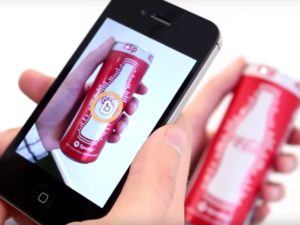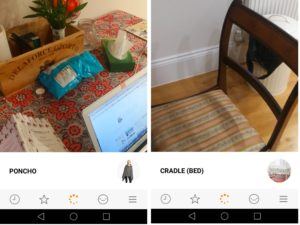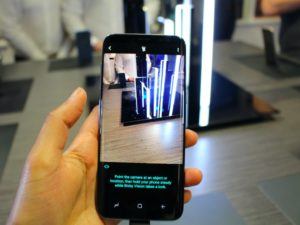Blippar: The Killer AR App That Never Was

Blippar could have been the ultimate killer app for AR – it was well-conceived, well-received and well-funded. But today, 7 years after its founding, the startup is struggling. What went wrong, and where can it go from here?
In many ways, Blippar could have been the ultimate killer app for AR. It was well-conceived, well-received and well-funded. But today, nearly seven years after its founding in 2010, the startup is struggling. Below, we try to dissect just what went wrong in its value creation and value capture model, and where the company can go from here.
Note: This blog post is based solely on public information and, like all such pieces, is limited to what is represented in the public domain.
Value Creation: Founding Ambition
Blippar was created as an image recognition platform and mobile visual browser powered by AR, AI and computer vision. In practical terms, the idea was that you could point your smartphone camera at any object and the Blippar app would “blipp” (scan) that object to unlock useful and entertaining content and information – essentially a visual version of Shazam. What Blippar sought to be able to do was not new – in fact, the ability to catalog (in the early days) and recognize (later on) any object in the world has been a bit of a Holy Grail for a plethora of startups, from thingd to Pinterest to, in some ways, Google. Co-founder and CEO Ambarish Mitra described what the company was trying to build as “bigger than the internet itself.”
But whereas thingd and Pinterest pivoted their business models to become much more commercially-oriented and essentially e-commerce companies (thingd pivoted to become Fancy) and Google can rely on its massive advertising business to support its image recognition efforts, Blippar was not able to find a pivot that worked, and it became stuck. Which is a bit of a shame, as the problem it seeks to solve is still a remarkable one that is yet to be solved. But before we look forward, let’s look back at how Blippar got here.
Value Capture: Business Model Evolution

Blippar launched as an AR app for users to get extra content after scanning product packaging via their smartphone cameras. Users could access games and information, and brands could make packaging interactive and engaging. Although brands were initially quite excited about the premise, the promised users and recurring usage did not manifest and the company realized that users did not necessarily want to download an app that pushed additional advertising. Over time, Blippar has shifted to an AI visual search engine that allows users to identify objects they pointed their cameras at and has redirected efforts from sales to engineering and moved its HQ from the UK to Mountain View. Today, the company is also seeking to develop facial recognition technology à la Snapchat.

According to industry sources, including former employees, Blippar is having a hard time nailing down its business model and is suffering from low user engagement. Although the overarching Blippar Group publicly discloses 65 million users, much of that engagement is presumed to derive from users of the Layar app (50 million users) rather than the Blippar app. The startup is apparently burning ~$3 million in cash every month and will need to raise additional funding in about a year – a statement that Blippar has denied.
Founder & Funding: A Blessing & A Curse
Blippar has a fascinating founding story that was later disputed and unraveled – Mitra’s version is that he ran away at age 16 from his middle-class Indian home to live in a shed in a Delhi slum, won a startup pitch contest and used the $10,000 prize to found a women’s web portal that he claimed to later have taken public (but which has since been proven otherwise). With his Slumdog Millionaire background and enjoyment of the spotlight, Mitra has been both a blessing – and subsequently a curse – for Blippar’s success.
The same could be said of Blippar’s coffers. With ~$100 million of funding to date from Qualcomm, the strategic investment arm of the Government of Malaysia and others, Blippar is one of the best-funded tech startups in the UK and one of the best-funded non-hardware AR/VR startups anywhere. That cushion has given Blippar the freedom to explore and experiment with various use cases and business models in a nascent industry. Yet as is sometimes the case with such types of companies, it appears that the easy availability of funds has also perhaps contributed to the lack of focus within the organization – there’s nothing quite like running out of money to serve as a forcing mechanism for a founding team to concentrate efforts on a few things that really matter.
Looking Forward
A key factor to whether Blippar will succeed comes down to its technology and just how good it is. Today, it isn’t great – the app has an average rating of 3.5-4.0 in both the App Store and Google Play Store. Most of the negative reviews point to the fact that frequently, the app “just doesn’t work” – a user will try to scan a hand and the app will return a foot. Much of that is likely due to the fact that it is extremely challenging for a startup to win over a large, established conglomerate such as Google, Facebook or Amazon on the basis of data – most of the startups that do succeed have done so on the basis of a breakthrough technology. When it comes to amassing the huge amounts of data necessary to index the physical world, the larger players simply have a scale advantage that is difficult for smaller upstarts to overcome. Yet that is precisely what Blippar is seeking to do – to pour resources into computer vision to solve a tremendously complex computing challenge.

If we believe the above to be the case, the path forward for Blippar seems to point strongly to an acquisition by one of the larger players working on the same problem – for example, as some have posited, to sell or license its underlying technology to a mobile phone manufacturer so that it can plug into that company’s datasets as well as become integrated into its phone camera rather than requiring the opening of a separate app. In fact, Samsung’s Galaxy S8 camera offers built-in object recognition technology (“Bixby Vision”) powered by Pinterest, and Shazam recently launched an AR platform for brands as well.

AR, in conjunction with AI, may and likely still will be the technology that enables Blippar’s original aspirations of recognizing “trillions” of objects, but it remains to be seen the player that will be able to leverage the technology to do so successfully.


